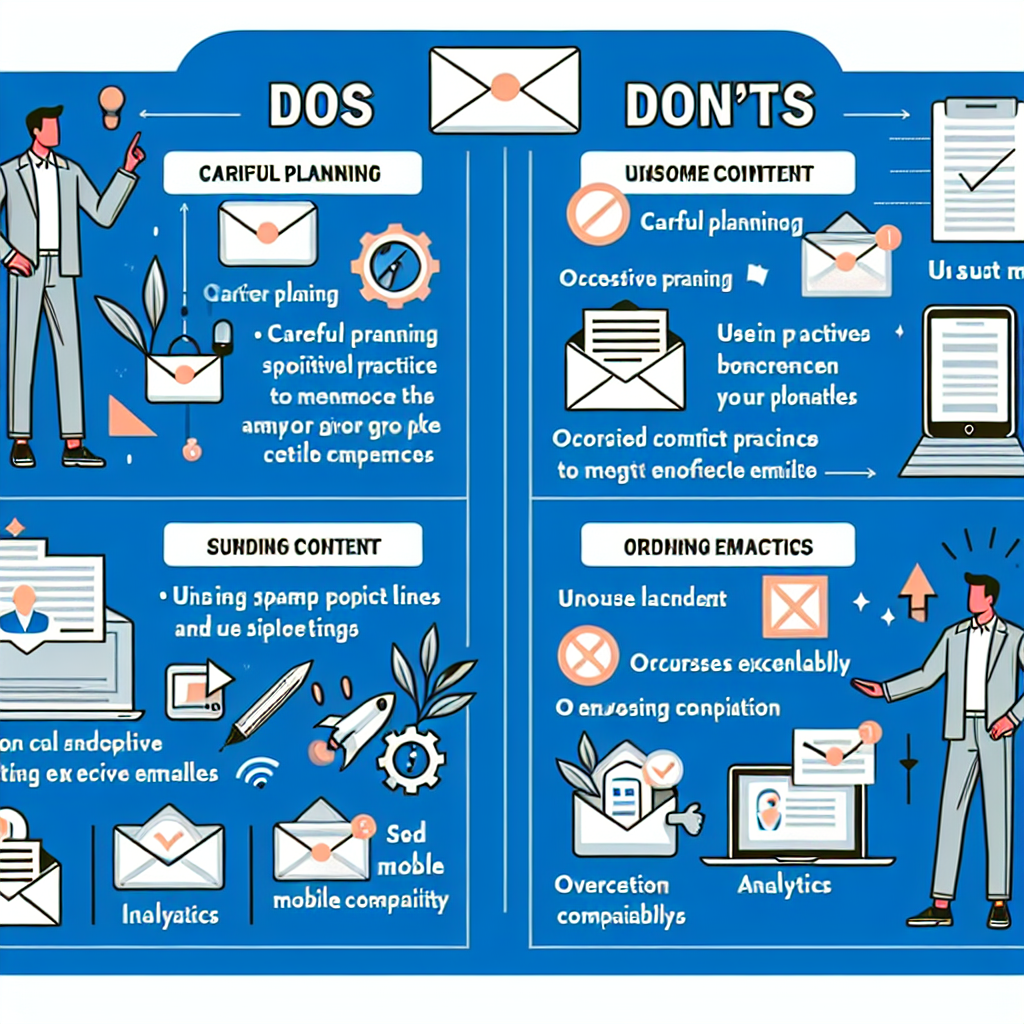The Complete Guide to Email Campaigns
Email marketing remains one of the most effective ways to reach and engage with your audience. With a return on investment (ROI) of $42 for every $1 spent, it’s clear that email campaigns are a crucial part of any digital marketing strategy. In this comprehensive guide, we will delve into the intricacies of creating successful email campaigns that capture attention, drive engagement, and convert leads into loyal customers.
What is an Email Campaign?
An email campaign is a coordinated set of individual email messages that are deployed across a specific period with one goal in mind. These campaigns can serve a variety of purposes, from promoting a new product to nurturing leads or simply updating your audience on company news. When done correctly, email campaigns can foster strong relationships between you and your audience.
Why Email Campaigns Matter
Email campaigns are not just a means of communication; they are a powerful tool for driving business growth. Here are some compelling reasons why you should invest in email marketing:
- High ROI: As previously mentioned, email marketing delivers an ROI of $42 for every $1 spent.
- Direct Communication: Emails land directly in your audience’s inbox, allowing for personalized and direct communication.
- Measurable Results: Email campaigns offer detailed analytics, helping you measure open rates, click-through rates, and conversions.
- Scalability: Email campaigns can be scaled to reach a large audience or tailored for niche groups.
- Automation: Marketing automation tools allow for sophisticated email workflows, saving time and ensuring consistency.
Steps to Create a Successful Email Campaign
Now that we understand the importance of email campaigns, let’s dive into the steps to create one that resonates with your audience and achieves your marketing goals.
1. Define Your Goals
Before crafting your email campaign, it’s crucial to define your objectives. Are you looking to generate leads, increase sales, promote a product, or simply build brand awareness? Clearly defined goals will guide your campaign strategy and help measure its success.
2. Know Your Audience
Understanding your audience is key to crafting relevant and engaging emails. Segment your audience based on demographics, behavior, and preferences. For example, you can create different segments for new subscribers, loyal customers, and inactive users. Tailoring your content to each segment increases the likelihood of engagement.
3. Build a Quality Email List
A successful email campaign starts with a high-quality email list. Use ethical methods to collect email addresses, such as offering valuable content or incentives in exchange for subscriptions. Avoid purchasing email lists, as they often result in low engagement and can harm your sender reputation.
4. Craft Compelling Subject Lines
Your subject line is the first thing recipients see, and it determines whether they open your email. Keep your subject lines concise, relevant, and enticing. Use action-oriented language and consider incorporating personalization. According to research, personalized subject lines can increase open rates by 26%.
5. Write Engaging Content
Once your email is opened, the content needs to capture and maintain the reader’s attention. Here are some tips for writing engaging email content:
- Keep it Concise: Get to the point quickly to respect your reader’s time.
- Use a Conversational Tone: Write as if you are having a one-on-one conversation with the reader.
- Provide Value: Offer useful information, tips, or exclusive offers that benefit the reader.
- Include a Clear Call-to-Action (CTA): Guide the reader on what to do next, whether it’s making a purchase, signing up for a webinar, or downloading a resource.
6. Design for Readability
The design of your email plays a significant role in its effectiveness. Ensure your emails are visually appealing and easy to read on both desktop and mobile devices. Use a clean layout, legible fonts, and relevant images. Make sure your call-to-action buttons stand out and are easy to click.
7. Test and Optimize
Before sending your email to your entire list, conduct A/B testing to determine what resonates best with your audience. Test different subject lines, content, images, and CTAs. Use the insights gained from testing to optimize your emails for better performance.
8. Monitor Analytics
Tracking the performance of your email campaigns is essential for understanding their effectiveness. Key metrics to monitor include open rates, click-through rates, conversion rates, and unsubscribe rates. Use these insights to refine your strategy and improve future campaigns.
9. Automate Your Campaigns
Email automation allows you to send timely and relevant messages to your audience without manual effort. Set up automated workflows based on user behavior, such as welcome emails, abandoned cart reminders, and re-engagement campaigns. Automation ensures consistency and helps nurture leads throughout their journey.
Common Types of Email Campaigns
Email campaigns come in various forms, each serving a specific purpose. Here are some common types of email campaigns:
Welcome Emails
Welcome emails are sent to new subscribers to introduce your brand and set the tone for future communications. They typically have higher open rates, making them a great opportunity to make a positive first impression.
Promotional Emails
Promotional emails are used to promote products, services, or special offers. These emails are designed to drive sales and conversions. Make sure to highlight the benefits and create a sense of urgency.
Newsletter Emails
Newsletter emails provide subscribers with valuable content, such as industry news, tips, and updates. They help build relationships and keep your audience engaged with your brand.
Transactional Emails
Transactional emails are triggered by specific actions taken by the user, such as order confirmations, shipping notifications, and password resets. These emails provide essential information and enhance the customer experience.
Re-engagement Emails
Re-engagement emails are designed to win back inactive subscribers. Offer incentives, such as discounts or exclusive content, to encourage them to re-engage with your brand.
Best Practices for Email Campaigns
To ensure the success of your email campaigns, follow these best practices:
1. Personalize Your Emails
Personalization goes beyond addressing the recipient by name. Use data to tailor content based on their preferences, behavior, and purchase history. Personalized emails have been shown to increase transaction rates by six times.
2. Mobile Optimization
With more than half of all emails being opened on mobile devices, it’s crucial to optimize your emails for mobile. Use responsive design, short subject lines, and clear CTAs that are easy to tap.
3. Maintain a Consistent Sending Schedule
Consistency is key to building trust and keeping your audience engaged. Determine the best frequency for your emails and stick to a regular sending schedule. However, avoid overloading your subscribers with too many emails.
4. Comply with Legal Requirements
Ensure your email campaigns comply with legal requirements, such as the CAN-SPAM Act and GDPR. Include an easy-to-find unsubscribe link and honor opt-out requests promptly.
5. Clean Your Email List Regularly
Regularly clean your email list to remove inactive or invalid addresses. This helps maintain a healthy sender reputation and improves deliverability rates.
Conclusion
Email campaigns are a powerful tool for connecting with your audience, driving engagement, and achieving your marketing goals. By following the steps and best practices outlined in this guide, you can create compelling and effective email campaigns that deliver results. Remember to define your goals, understand your audience, craft engaging content, and continuously monitor and optimize your efforts. With the right strategy in place, your email campaigns can become a cornerstone of your digital marketing success.


